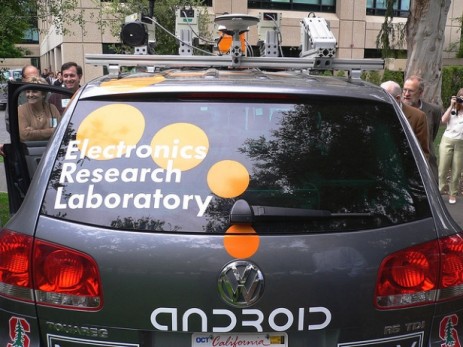The world is pumped that Google is passing mile markers on the road to creating a fully automatic automobile — a robot car optimally primed for piloting without humans. Fewer accidents, better fuel efficiency, less traffic congestion — seems like the true transportation of the future, right? But let’s put all this shiny hype in neutral while we consider what happens when robot vehicles freely roam the earth:
 The co-inventor of Stanley the friendly driverless car is now working for Google on the next generation of automatic autos. Will they be called Decepticons?Photo: Steve JurvetsonEven if the driverless car of the future is in the form of a fuel-friendly Prius, why take the risk that Google may be secretly inviting Transformers to continue destroying the world with cars?
The co-inventor of Stanley the friendly driverless car is now working for Google on the next generation of automatic autos. Will they be called Decepticons?Photo: Steve JurvetsonEven if the driverless car of the future is in the form of a fuel-friendly Prius, why take the risk that Google may be secretly inviting Transformers to continue destroying the world with cars?
OK, maybe Stanley and friends don’t hail the coming of the evil Megatron, but just taking the person out of the driver’s seat doesn’t solve all the other junk in a car trunk (human isolation, pollution, enough parking spots in the world). Don’t Decepticon yourself about not driving one of these cars around town anytime soon because even the most optimistic autobots aren’t predicting a roll-out for more than eight years.
——————————————————————————————————————————————–
Like what you see? Sign up to receive The Grist List, our email roundup of weird, offbeat, and/or just plain funny green news, sent out every Friday.



